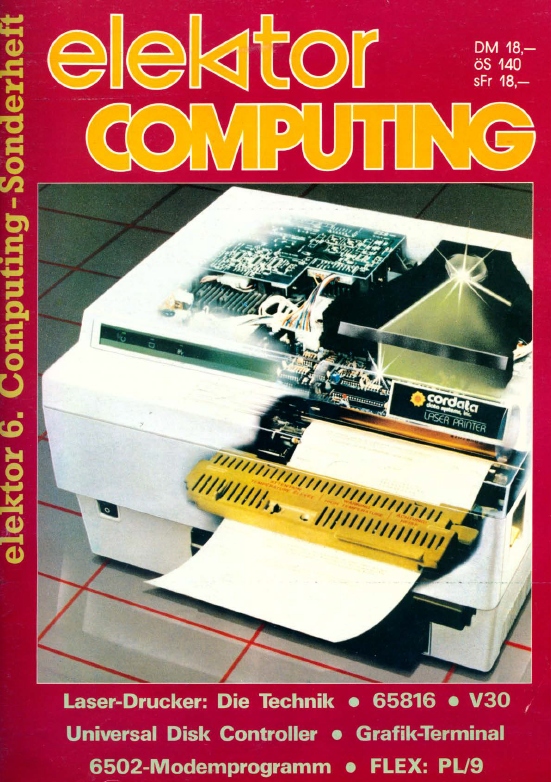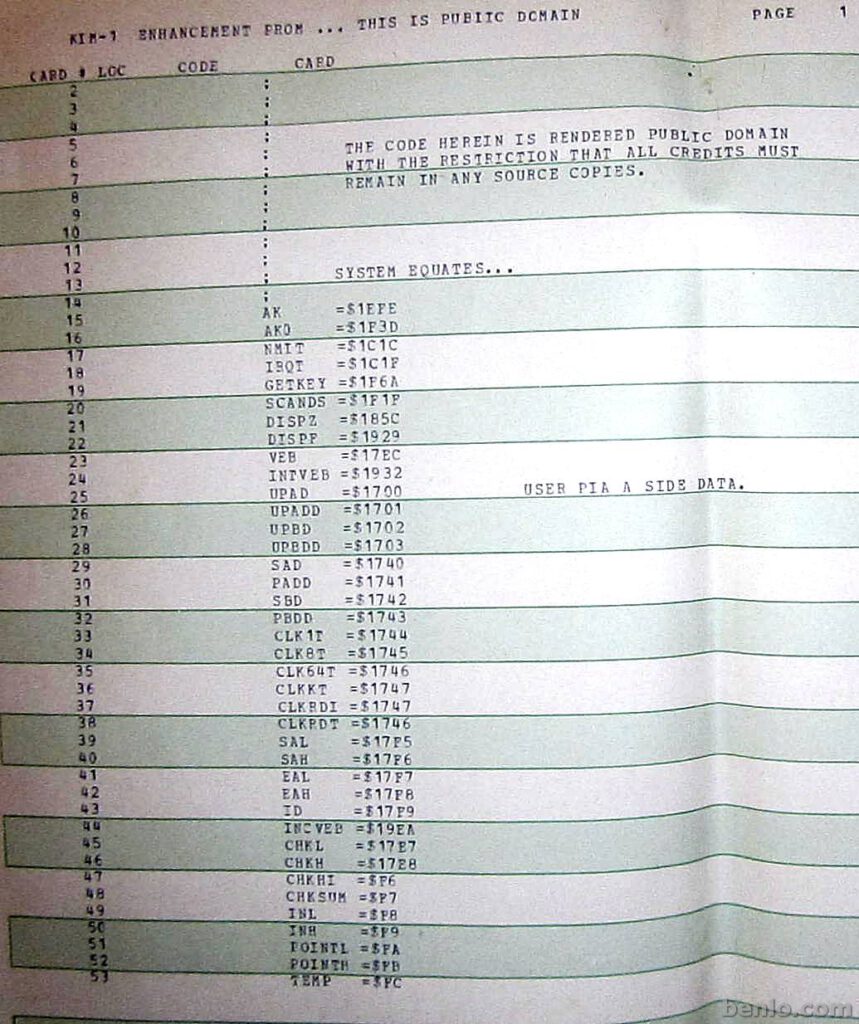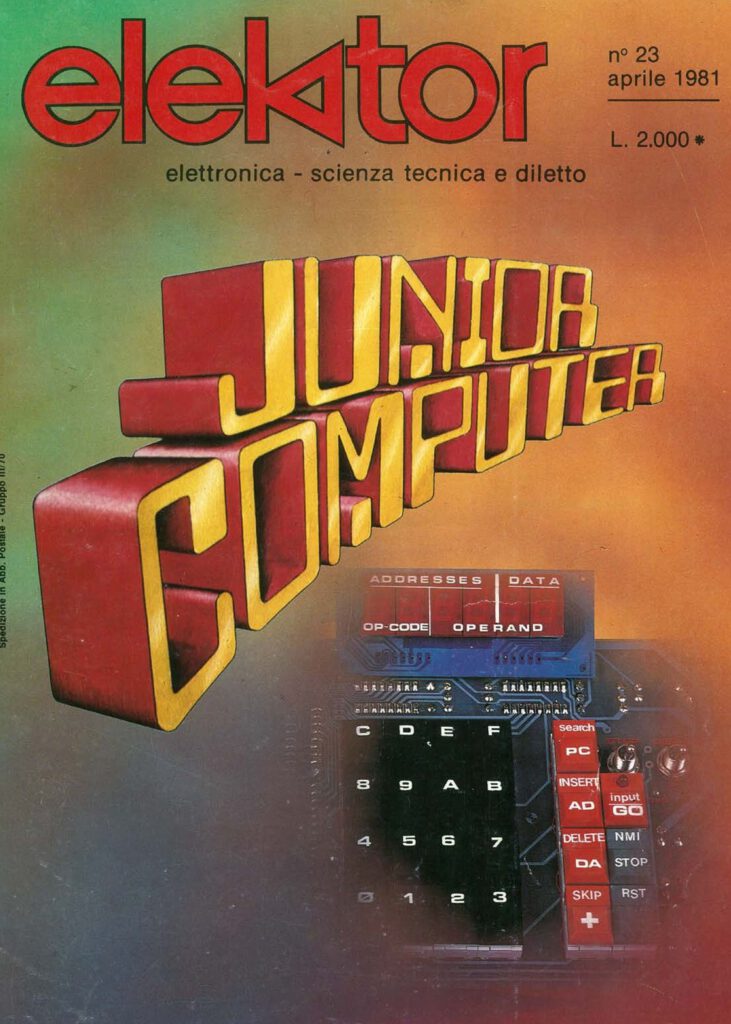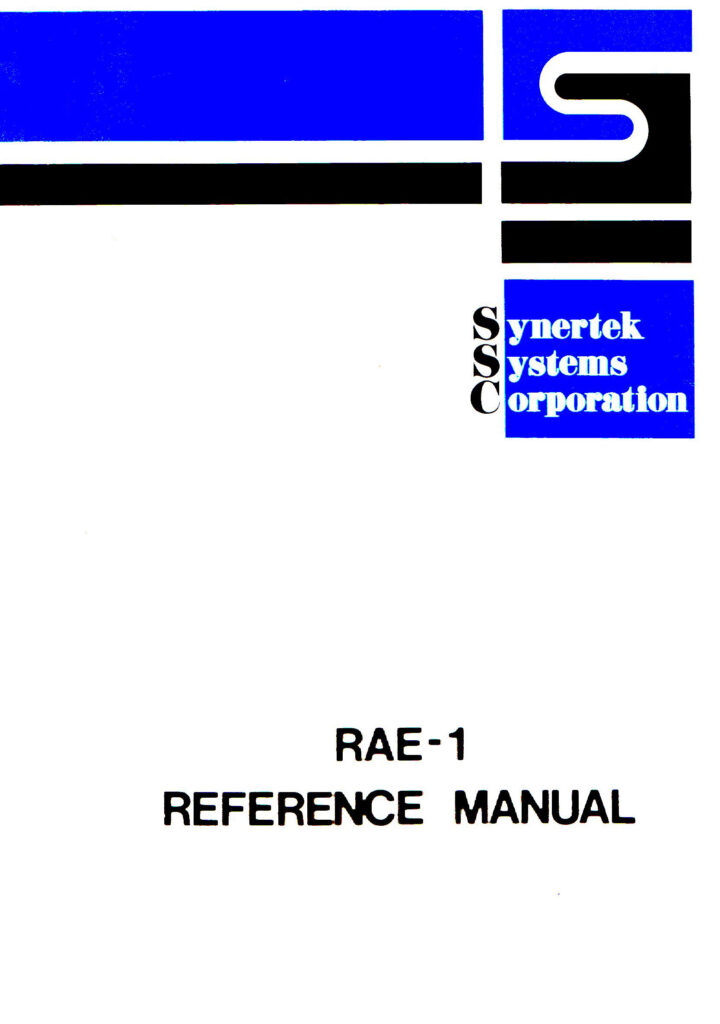Added to the Elektor book pages:
– Junior Book 1 Francais
– Elektor Computing German 1-6
Author Archives: hanso
KIM-1 Enhancement PROM
This source for an enhancement of the KIM-1 contains Jim Butterfield’s Supertape and some other utilities and code.
The PROM is to be placed on top of memory, it contains the RESET/NMI/IRQ vectors.
The source listing for a PROM designed to enhance the KIM-1.
Written by René Vega of Detroit in September 1976. From the archives of Peter Jennings.
; THE FOLLOWING ROUTINES MAY BE ENTERED VIA THE ; "GO" KEY ON THE KEYPAD. ; ; FC00 - SUPRTP - KIM CASSETTE HIGH SPEED DUMP. ; FE3B - COMPTP - ROUTINE TO COMPARE A KIM FORMAT ; CASSETTE WITH CONTENTS OF MEMORY. ; FE46 - VIEWTP - ROUTINE TO LOOK AT A KIM FORMAT ; CASSETTE WITHOUT ALTERING MEMORY. ; FE4F - LOADTP - ROUTINE TO LOAD A BLOCK IN KIM ; AUDIO CASSETTE FORMAT. ; FCEA - LDSYS - ROUTINE TO LOAD MULTIPLE BLOCKS ; INTO MEMORY REGARDLESS OF THE ID ; NUMBERS ON THE TAPE. UPON LOADING A ; BLOCK THAT BEGINS AT $EF, THE ; ROUTINE JUMPS TO ($EF).
See also:
KIM-1 connectors: beware the Chinese cheap variants!
Magazines: Compute! and Compute II
All documents in the MTU pages are now clean and higher quality, about 50 new PDFs.
Focal-65 V3D for TIM and KIM-1
OUP/M – A 6502 CP/M Operating system
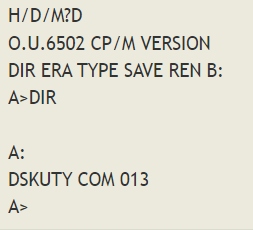 A thesis by Jian – Xiong Shao, 1983, titled OUP/M – A 6502 Operating system, contains a floppy disk based operating system for the 6502. It is modelled after CP/M and follows the same design principles.
A thesis by Jian – Xiong Shao, 1983, titled OUP/M – A 6502 Operating system, contains a floppy disk based operating system for the 6502. It is modelled after CP/M and follows the same design principles.
In the development of OUP/M, an OSI C-3 microcomputer system was used. This system consists of a 6502 CPU, a dual 8-inch floppy disk drive, a console, a printer, and 56 K bytes of RAM.
On this machine all I/O is memory mapped and address space layout has to be taken into consideration.
For years only the document was available, archived on archive.org, with the source in the document.
Jian – Xiong Shao did not publish more 6502 code, further implementations are unknown.
See the OUP/M page for sources and binaries found on osiweb.
See also:
KIM-1 connectors: beware the Chinese cheap variants!
Magazines: Compute! and Compute II
All documents in the MTU pages are now clean and higher quality, about 50 new PDFs.
Focal-65 V3D for TIM and KIM-1
More Elektor Junior
I think I am for now finished with the Junior pages:
- On request I recreated the Junior book 3 to single page, black and white, no artefacts
- Added a page on Junior software
- A new DIY build of a Junior (laurent_fr)
- GAL for 82S33 page update with information from laurent_fr
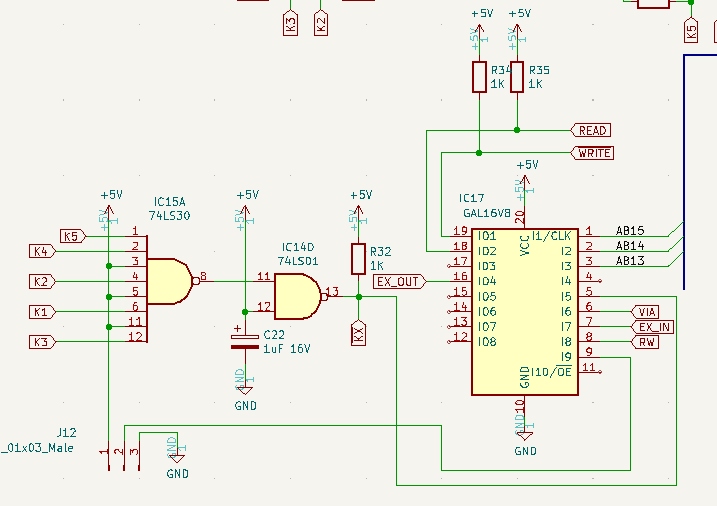
See also:
KIM-1 connectors: beware the Chinese cheap variants!
Magazines: Compute! and Compute II
All documents in the MTU pages are now clean and higher quality, about 50 new PDFs.
Focal-65 V3D for TIM and KIM-1
Elektor Junior pages updated
After several years so much new and correct information has been coming in!
While I was studying the Comal interpreter, I want to port it to the KIM-1, I realised the Elektor pages required some updating and reorganising.
I could not find easy what I needed: circuits and source listings. So I extracted the circuits from the articles and checked the various listings with the ROMs I had in my archive.
Also the sources that appeared the last years were checked, adapted and the binaries compared with the hex dumps. Some surprises, many faults and not with the correct names.
The ESS numbers are now attached to the ROMs.
Now you can have all the essential Elektor Junior information from base to full system with checked ROMs, with sources, step by step.
The complete archive of articles and books is also updated, especially the English articles are as complete as possible.
Have a look at the Elektor Junior pages!
With thanks to the many persons and fora that helped me to collect the information.
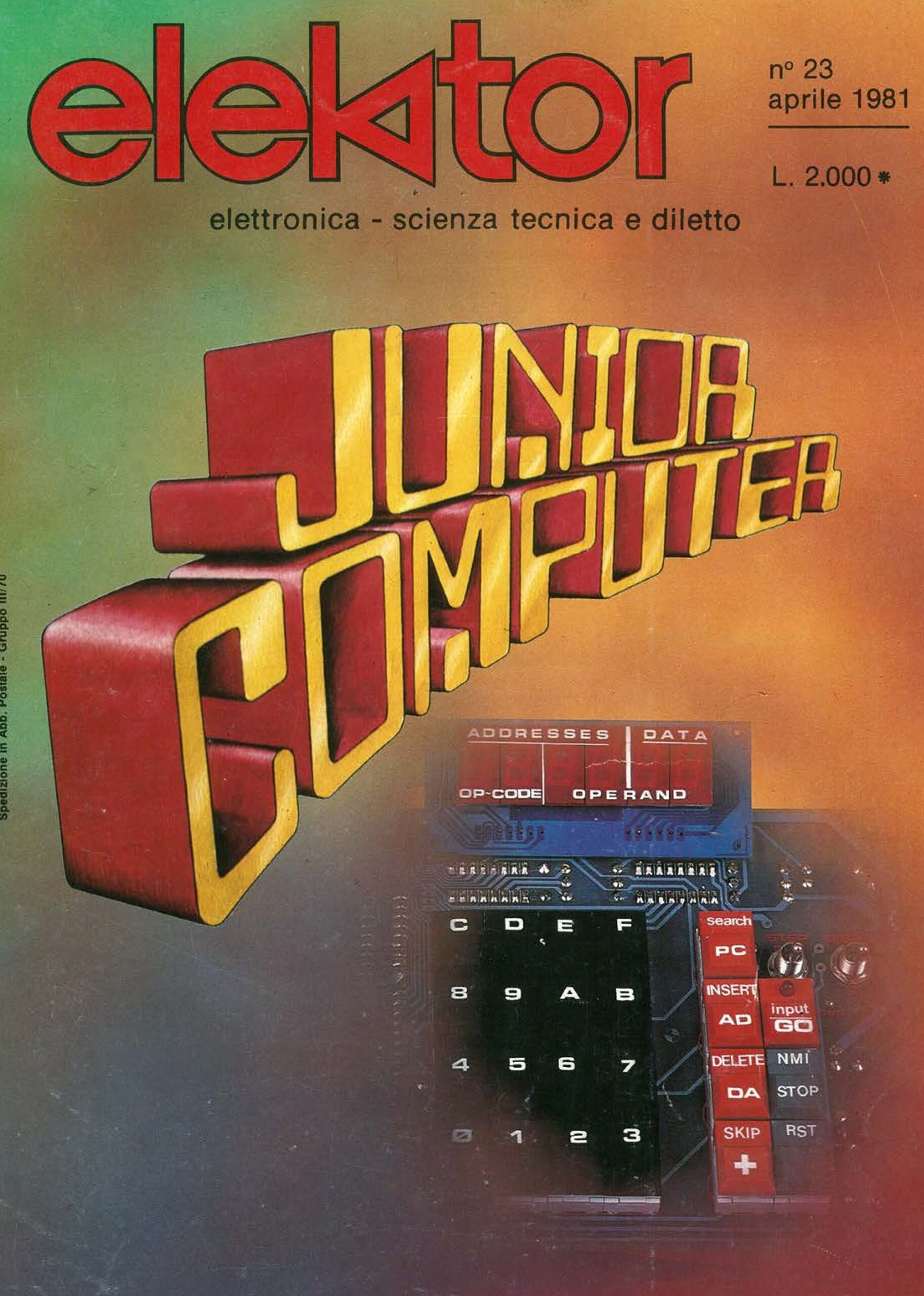
See also:
KIM-1 connectors: beware the Chinese cheap variants!
Magazines: Compute! and Compute II
All documents in the MTU pages are now clean and higher quality, about 50 new PDFs.
Focal-65 V3D for TIM and KIM-1
Italian Junior articles archive
See also:
KIM-1 connectors: beware the Chinese cheap variants!
Magazines: Compute! and Compute II
All documents in the MTU pages are now clean and higher quality, about 50 new PDFs.
Focal-65 V3D for TIM and KIM-1
SYM-1 RAE-1 Reference manual, version of 1980
See also:
KIM-1 connectors: beware the Chinese cheap variants!
Magazines: Compute! and Compute II
All documents in the MTU pages are now clean and higher quality, about 50 new PDFs.
Focal-65 V3D for TIM and KIM-1
Focal runs on KIM-1 Simulator
KIM-1 Simulator version 1.1.6 has been published. Get it here.
It now supports Focal-V3D 12-AUG-77 (the Aresco version) from the KIM-1 Software page, see here.
Updates to the Simulator are a working echo suppression (see here for background). Available to any program.
For Focal V3D a setting has to be made in the Settings, to allow Focal to do its magic in the input routine.
By working on Focal I did add comments to the disassembly of what I found. You will find the original by Paul R. Santa-Marie and my partly commented version in the archive.
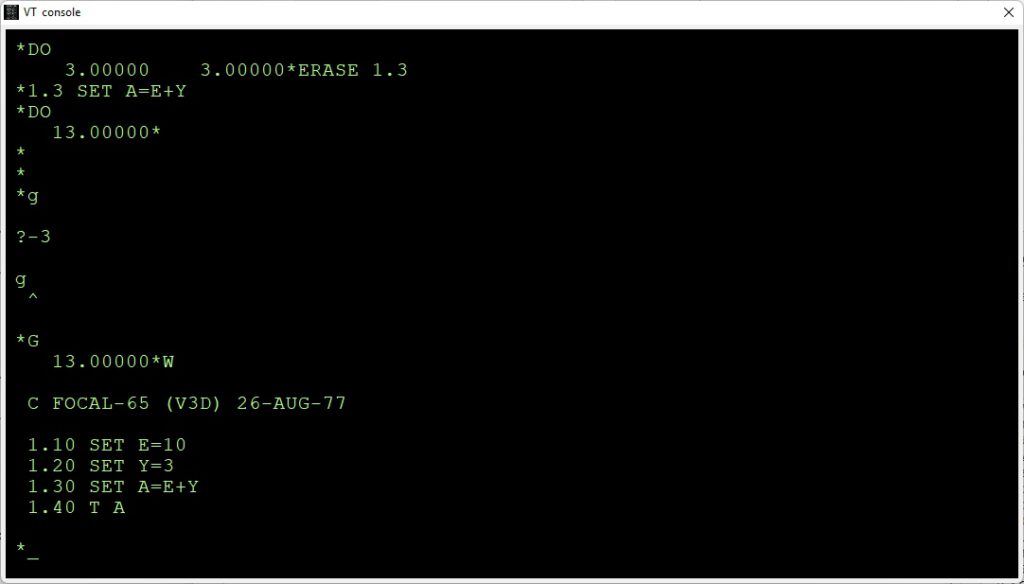
See also:
KIM-1 connectors: beware the Chinese cheap variants!
Magazines: Compute! and Compute II
All documents in the MTU pages are now clean and higher quality, about 50 new PDFs.
Focal-65 V3D for TIM and KIM-1
Testing the 6530-002 RRIOT with a KIM-1
This article is written by Jeff M. Nay, about his experiments to restore a KIM-1 to working order. The challenge was to address the second 6530-002 in this setup at another address then the onboard 6530-002 RRIOT.The experiment was a success, the 6530-002 is indeed in a bad state, the ROM is corrupt and it had to be replaced.The KIM-1, from a friend, was in a bad state. The repair was a success also. He was able to get this old KIM-1 working again, after only having to replace, the 6502 CPU, the 6530-002 RRIOT Chip with a Corsham 6530 Replacement board, all 8 Memory Chips and the U17 7406 inverter. Read the article here
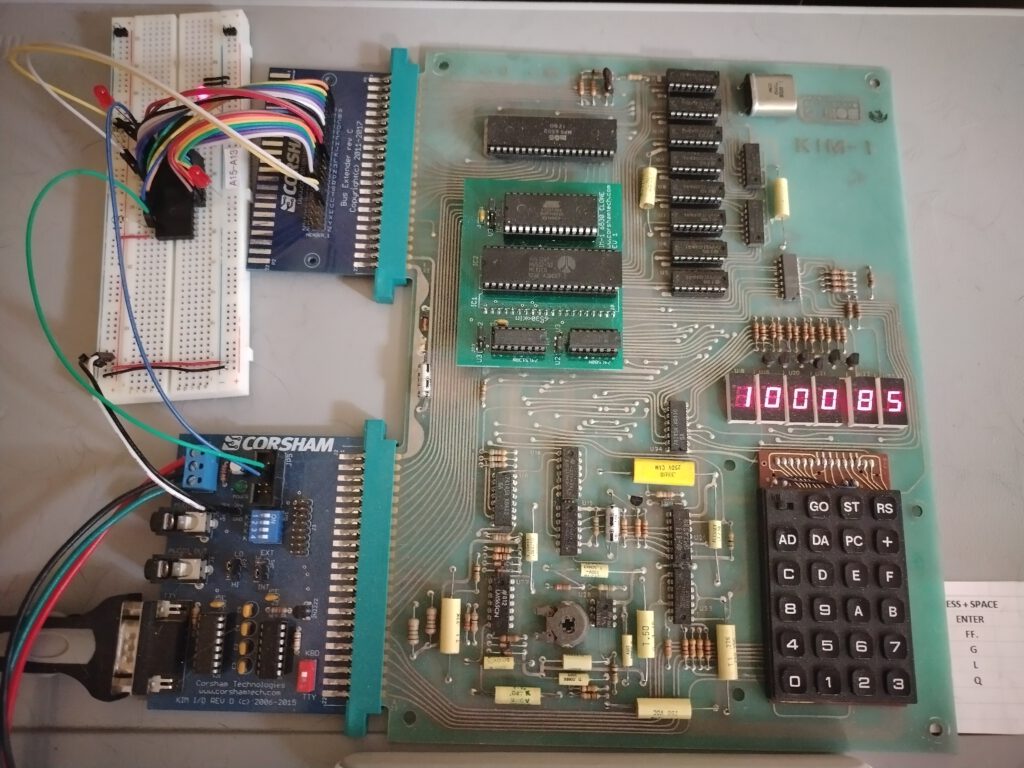
See also:
KIM-1 connectors: beware the Chinese cheap variants!
Magazines: Compute! and Compute II
All documents in the MTU pages are now clean and higher quality, about 50 new PDFs.
Focal-65 V3D for TIM and KIM-1
KIM-1 and TIM updates
I have added the following to the KIM-2 KIM-3-KIM-4 KIM-5 KIM-6 pages:
– brochure with photos and descriptions and pricelist KIM System Products
– photos of KIM-2 and KIM4 with KIM-4 motherboard with KIM-3b, KIM-5, KIM-6
– brochure TIM System Development Aid with pricelist
The brochure of KIM-5 etc is from Commodore, the KIM-2 RAM was already dropped for a higher capacity KIM-3B. The KIM-5 was still mentioned as product. Alas I have never seen or heard of a KIM-5 in the hands of a user. So the ROMS are lost alas.
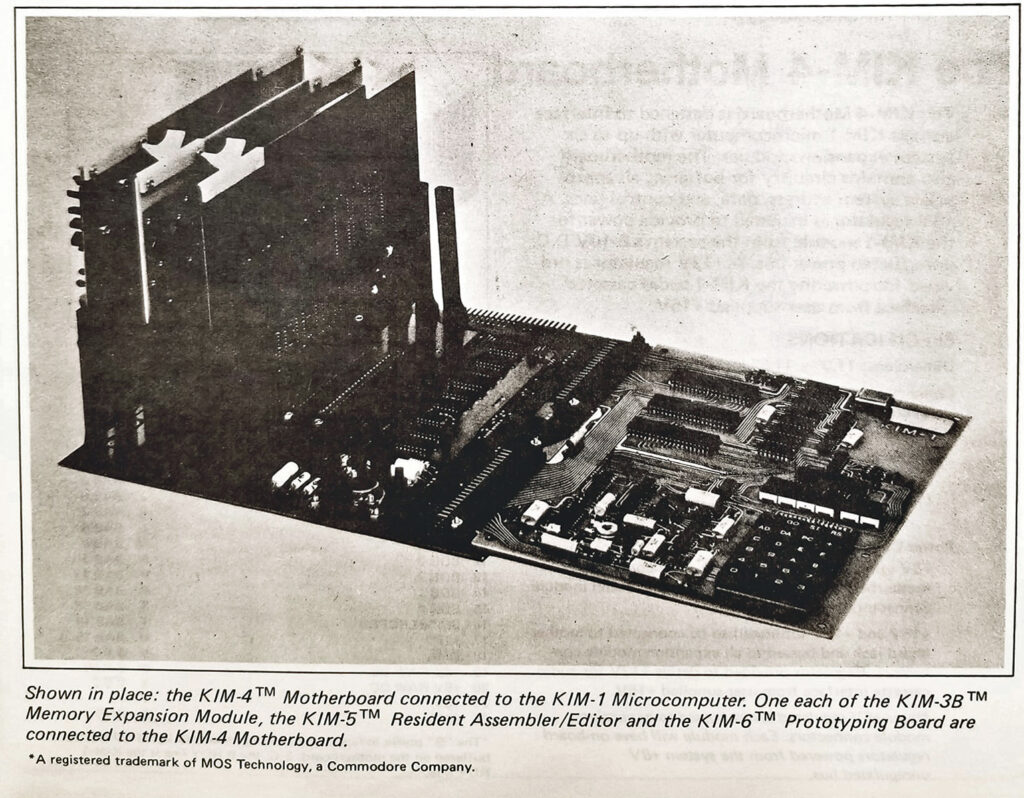
KIM-4 with KIM-3B, KIM-5, KIM-6

